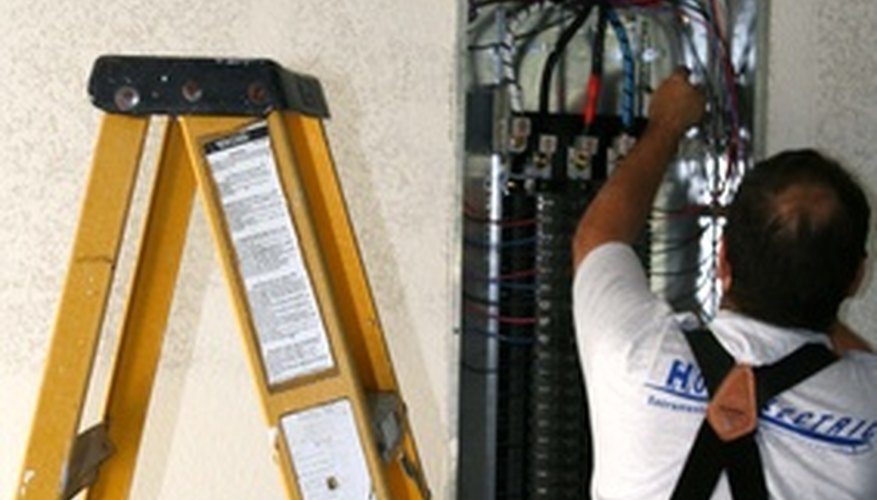Reverse polarity occurs when electrical wires are connected to the wrong or opposite terminals. Normally, the positive wires are hooked up to the positive terminal and the negative to the negative terminal. But reversing the connections creates a potentially hazardous situation, even though most receptacles work normally even when polarity is reversed. If you suspect the wiring in your home is not correct, you can check the polarity with a simple device from the hardware store.
Signs of Reverse Polarity
If a home's circuit breaker is tripping often (a fuse in the fuse box keeps switching off, this can be an indication of reverse polarity in the house. Appliances such as microwaves, dishwashers, toasters, space heaters or refrigerators continually malfunctioning or losing power is also a signal of the problem. If sparks are emanating from an appliance's power unit or battery, that can be a sign of a more dramatic polarity issue.
Dangers of Reverse Polarity
In some circumstances, reverse polarity can permanently damage a home appliance or computer that is plugged into an outlet with the problem. The reverse flow of the current turns the appliance into a receptacle of electrical heat and can even spark a fire. Because many appliances will continue to work in this condition, you may not know there is a problem. Often, reverse polarity can only be detected if a unit without built-in electrical protection against reverse polarity is activated.
- In some circumstances, reverse polarity can permanently damage a home appliance or computer that is plugged into an outlet with the problem.
- Often, reverse polarity can only be detected if a unit without built-in electrical protection against reverse polarity is activated.
Protection
If you are uncertain whether there is a reverse polarity problem in the house, purchase appliances that have built-in diodes that protect from the effects of faulty wiring. These appliances will fail to turn on or will automatically shutdown when a polarity problem is detected. Ensure the circuit breaker system in the home is up to date and in working order. Surge protector devices can keep electrical equipment and appliances safe from the damage of crossed wires or faulty wiring.
- If you are uncertain whether there is a reverse polarity problem in the house, purchase appliances that have built-in diodes that protect from the effects of faulty wiring.
- Surge protector devices can keep electrical equipment and appliances safe from the damage of crossed wires or faulty wiring.
Detecting the Problem
The best way to test for reverse polarity is to use a plug-in voltage tester, which you can find at most hardware stores for less than £13. The tester plugs into any home outlet and a chart on the device indicates whether the wiring is correct. Plug the tester into all the outlets in the home to conduct a thorough check of the house's electrical system.
Fixing the Problem
After you have determined where the polarity problem exists, turn off the circuit breaker that supplies that outlet or receptacle. Unscrew the wall cover and use the circuit tester to be sure none of the wires in the electrical box is still receiving power. Remove the wiring and reconnect to the proper terminals. Generally this means the white wire goes to the silver terminal and the black to the brass terminal. The green or bare wire (the ground) should connect to the green screw. Put the wall cover back on and turn on the circuit breaker. Use the plug-in tester again to be sure the polarity is correct.
- After you have determined where the polarity problem exists, turn off the circuit breaker that supplies that outlet or receptacle.
